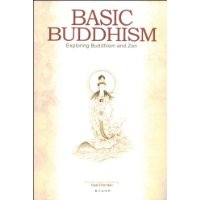
基本信息出版社:东方出版社
页码:383 页
出版日期:2008年11月
ISBN:7506033313/9787506033312
条形码:9787506033312
版本:第1版
装帧:平装
开本:32
正文语种:英语
内容简介 《中国佛教发展史略述》为英文版,由东方出版社出版,分为五大部分为CHATER 1:Buddism and the Culture of India,CHAPTER 2:Shakyamuni Buddha,the Founder of Buddhism,CHAPTER 3:The Transmission of Buddhism to China,CHAPTER 4:Buddhism in Other Countries,CHAPTER 5:Buddhism in the 20th Century.
目录
CHAPTER 1.Buddhism and the Culture of India
The Development of Indian Culture
The Rise of Various Philosophical Trends
Chapter Summary
CHAPTER 2.Shakyamuni Buddha, the Founder of Buddhism
Shakyamuni' s Lineage
Leaving Home and Awakening to the
Path
The Founding of the Teaching
Chapter Summary
CHAPTER 3:The Transmission of Buddhism to China
The First Period of the Transmission
The Heyday of Chinese Buddhism la
Chapter Summary 1E
CHAPTER 4:Buddhism in Other Countries
Buddhism in Asia
Buddhism in Europe and America
Chapter Summary
CHAPTER 5.Buddhism in the 20th Century
The Decline of Chinese Buddhism Since
the Qing Period
The Buddhist Revival of the Late Qing
and Early Republican Periods
Conclusion
APPENDIX:The Zen Monastic System and Chinese Society
The Different Societies of Eastern and
Western Civilization
The Early Buddhist Monastic System
The Origin of the Zen Monastic System
The Zen Monastic System: Its Regula-
tions and Guidelines
The Influence of the Zen Communities
The Zen Halls:Cultivation of Practice
The Legacy of the Zen Community Pure Rules
The Zen Community and Patriarchal Clan Society
The Zen Monastic System and Chinese Culture
The Zen Monastic System and the Secret Societies
Closing Comments
Indx
About the Author
……
文摘 Around the period that Shakyamuni Buddha founded Bud-dhism.a profusion of various schools of philosophy,all seekingthe truth for themselves,established their independence.Eachhad its own philosophical system and its own organized systemof thought.It is customary in the study of Indian philosophy tospeak of the six orthodox schools and the three heterodoxschools.The six so-called orthodox schools were Samkhya,Yo-ga,Vaisheshika,Nyaya or Naiyayaka,Mimamsa,and Vedanta.These six schools accepted the authority of the philosophy thathad come down from the Vedas,and they can be called the or-thodox schools of the brahmanical religion.The three so-calledheterodox schools were Buddhism,Jainism,and Worldly Secu-larism。These three schools were anti-orthodox:they did not ac-cept the authority of Vedic thought.
The worldview of the Samkhya school was dualistic.It、maintained that at the basic source of the world there were two original principles:a material inherent identity and a spiritual self.By the development of these two original principles,there came to be egotism,the five organs of knowledge,the five or一‘gans of action,the organ of mind,the five sense obj ects,and thefive great elements.By means of these twenty-five truths,the Samkhya School accounted for the myriad forms of the world. The Yoga school established its own philosophy based onthe thought of the Samkya sch001.The Vaisheshika school,based on a pluralistic theory,put forward a materialistic view of.